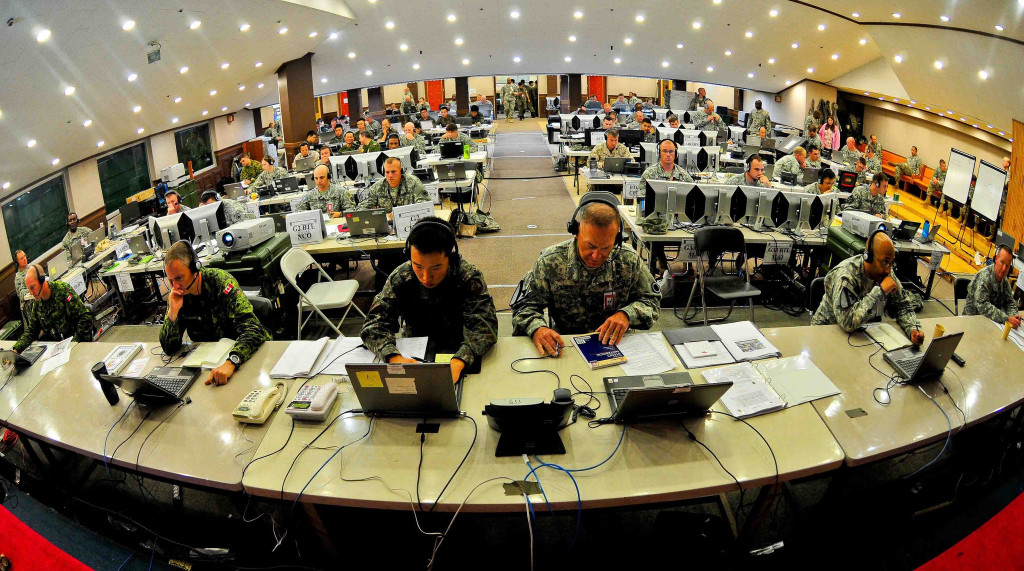Standing up to Ash Carter’s PowerPoint Jihad

Our brand new Secretary of Defense Dr. Ashton Carter made quite a splash the other day when news of his aversion to senior commanders’ use of PowerPoint presentations caused wild celebrations throughout the Pentagon. Legions of majors and lieutenant commanders were brought to tears of joy at the prospect of never again having to worry about timed transitions, thought bubbles, and the inevitable “What it the bumper sticker?” question. As a political conservative, it is my job to cast a wary eye at the new and trendy in order to preserve the goodness, the structure, and the order of the proven and the durable. In this spirit, I rise in favor of the well-crafted PowerPoint brief and, to borrow from William F. Buckley, to “stand athwart history yelling ‘Stop!’”
First, let us get one thing very clear. I am not a very good PowerPoint maker. For me, PowerPoint is like watercolor painting. Sure, I can do it and so can any five year old, but you will not like the final result. So if you end up in a room with a deck that I made, please understand that I don’t like my slides either.
But let us consider why PowerPoint exists in the first place. PowerPoint is a tool born of the computer age for displaying information. We used to draw stuff on acetate and project it on a white screen, and for some odd reason, we found this unsatisfying. PowerPoint allowed us to convey larger amounts of information in shorter periods of time. These impulses were good and wholesome, and their realization in a handy-computer program unlocked a lot of productivity in what were previously very unproductive people.
[widgets_on_pages id=2]
Since I have risen in praise of a “well-crafted” PowerPoint, let us define what that is. For this, I will fall back on the old chestnut first applied to the definition of obscenity, and that is, “I can’t define it, but I know it when I see it.” Come on, even you dyed-in-the-wool haters know damn well you have sat in on a particularly well-done, persuasive PowerPoint and come away nodding your head, better informed, and full of useful information. Since this “you know it when you see it” definition is likely to leave some unsatisfied, a few common elements of the successful brief are 1) a competent briefer who knows the subject well; 2) a modest number of slides (I suggest no more than one slide for every five minutes the meeting will last); 3) no more written information on the slides than is necessary to reinforce the most important aspects of the narrative; 4) plenty of “white space” and pictures; and 5) the use of charts and graphs to visualize data in ways in which the audience may not have thought about such data before. To restate, no words but the most important take-aways should go on slides.
Most importantly though, the meteoric rise of PowerPoint was fueled not only by its utility in displaying a wide range of information and formats, but also by the pitiful state of writing ability resident in the officer corps of the U.S. military. Perhaps there is a chicken/egg quality to this debate, with some holding that PowerPoint has killed writing skills. I see it differently. I see PowerPoint as having filled the gap created by the decline in our collective ability to write competent, information-based point papers and backgrounders suitable for executive consumption.
I hope Secretary Carter realizes the Pandora’s Box he has opened. His “PowerPoint Jihad” will let slip upon the Department of Defense all manner of offense to logic, rhetoric, and argument. To put it another way, the skills required to put together a competent PowerPoint brief are considerably less than the skills required to put together a competent background paper or staff summary. Mr. Gates’ “efficiencies” drills already created staffing nightmares throughout the Pentagon, and now these already understaffed bureaus and directorates will find themselves having to actually write competently, informatively, and succinctly. Those of you saying, “A-ha! Over time, these skills will return to the workforce and we will all be better for it” have not done much poking around the education system of this grand country. Our youth have indeed mastered the brevity of social media, but the cost has been their ability to write well-formed sentences and paragraphs. Action officers dancing in the aisles today at soon not having to slave all day over a PowerPoint—something most of them can do with some skill—will find the act of creating executive level written material excruciatingly difficult. Additionally, the aforementioned executives are going to have to get a whole lot more tolerant of bad logic and writing, with tolerance for shoddy work not having been one of the attributes associated with their rise to current positions.
In summary, there is baby and there is bath water, and the key is knowing which is which. Dr. Carter has admirably challenged his bureaucracy to develop more tools and methods for communicating information to him, and there is goodness in this quest. Ultimately though, we will find that holding the line on improving the quality of PowerPoint briefs will be considerably easier than teaching an entire bureaucracy to write.
Bryan McGrath is the Managing Director of The FerryBridge Group LLC and the Assistant Director of the Hudson Institute’s Center for American Seapower.

